Mini Guide to Tripoli
Tripoli is Lebanon’s second largest city and provides visitors with a great Middle Eastern vibe. Wander around the winding market places and historical sites and you’ll soon find yourself falling for its charm.

Getting There
Tripoli is located around 80km north of Beirut. Take the coastal highway northbound from the capital past Jounieh and Byblos , and follow the signs to Tripoli.

Your first stop in Tripoli should be the old souks. Head into the souk, a frenetic maze of jewelry shops, kaake vendors and juice stands. Scattered throughout its tight alleyways are various Mamluk, Crusader and Ottoman relics, like the Mansouri Mosque, the Khan Al Saboun, a beautiful courtyard where soap is still made by hand, and Hammam El Jadid, a hammam with stunning mosaics and a glass dome ceiling.

Citadel of Raymond de Saint-Gilles
Tripoli’s Citadel was built by Raymond VI of Saint Gilles, a knight of the very First Crusade, who set out to conquer Tripoli and erected the castle around AD 1100. You can roam through the sprawling grounds of this Crusader Castle and admire its Frankish and Ottoman foundations. Every stone staircase leads to a new deck and each doorway opens up into a grand hall from Lebanon’s past. Climbing through the structure to the very top of the castle, visitors will find an unmatched panorama of Tripoli from above.

El Mina and Corniche
Roaming around the laid-back seaside neighborhood of El Mina is a must in Tripoli. The El Mina quarter juts out into the sea and is defined by its relaxed and quaint atmosphere. Buildings are old and beautiful, and there is a tenable small town feeling, complete with colorful houses, local churches and charming alleys.
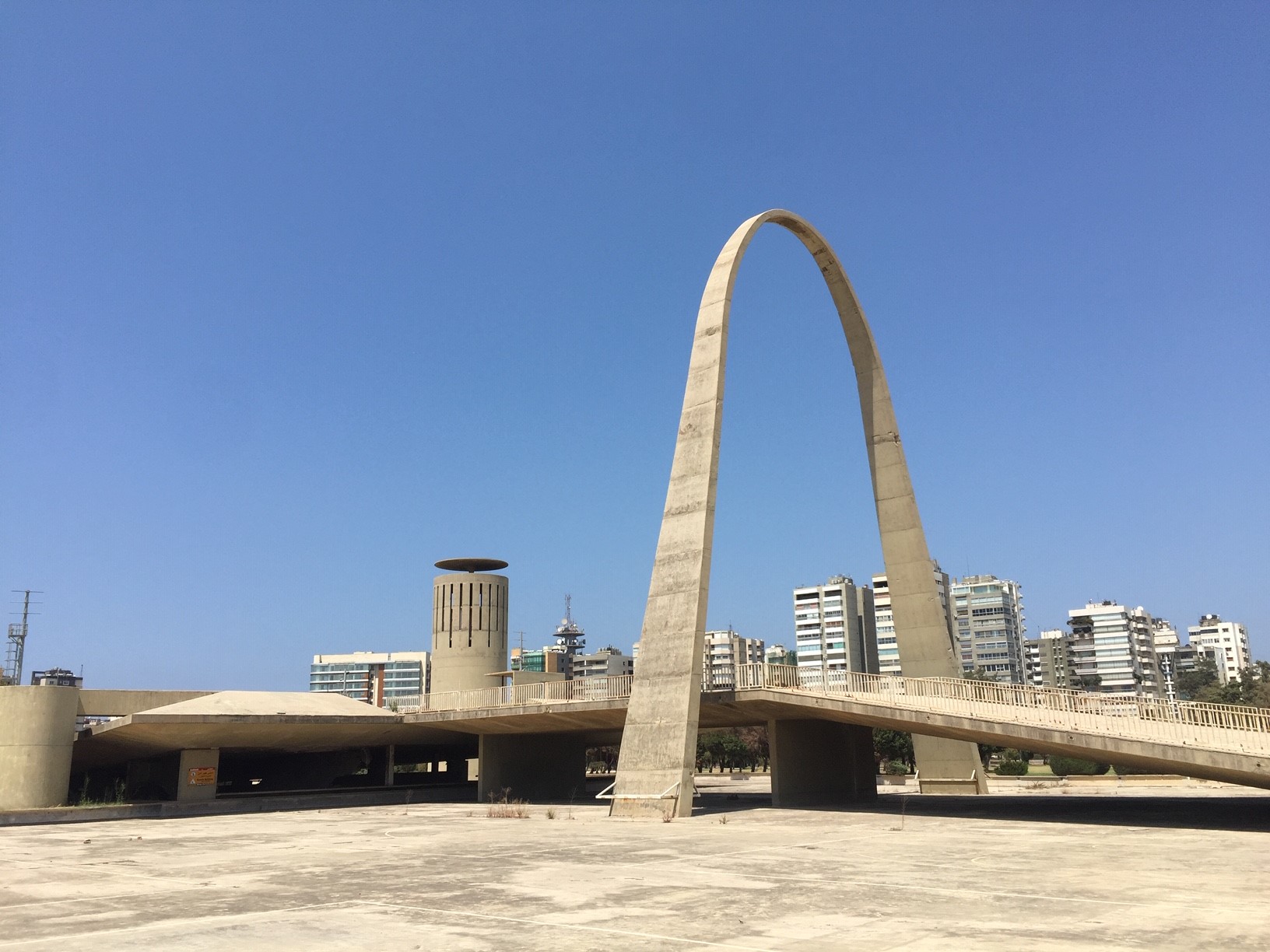
Designed by renowned Brazilian architect Oscar Niemeyer, the International Fair comprises 15 modernist concrete structures, which were intended to create a tourist hub. The complex was partially completed in 1974 but left unfinished due to Lebanon’s Civil War. The Getty Foundation recently announced that the site was being given a 225,000 USD grant as part of their “Keeping It Modern” initiative to spend on a two-year conservation and management plan. UNESCO has also placed the fair on their Indicative Heritage List, which is a step towards being considered for full World Heritage List status.
Palm Island Reserve
The Palm Island Reserve consists of three islands. Declared a protected site by UNESCO in 1992, the islands are populated with endangered species of rabbits, monk seals and turtles. The largest island, Nakheel, features around 2,500 palm trees, with paths laid out for visitors. The islands are open to the public from July to September so take advantage. Just remember to negotiate the price of your boat trip at the port, pack some food and float away.

The Lion Tower and Train station
Just down the Corniche from the Mina neighborhood is the Lion Tower, or Burj al Sabaa, and old train station. The Lion Tower was built by the Mamluks in the 14th century for military use, and was constructed using old Roman columns that were lain horizontally to fortify the tower. It is well worth the climb to the top to get a sweeping view of the Tripoli port. After a tour of the Lion Tower, walk around the old train station right beside the Tower. The famous Orient Express once ran from Homs in Syria to the station in Mar Mikhael. Today, visitors can walk around the unused and rusting train cars.
Where to Eat
Although Dannoun ( +961 6 438 844 ) may not look like much from the outside, this renowned spot in the Al Tall neighborhood is almost always full. Be sure to stop by to try their foul and hummus . You won’t regret it!
Akra ( +961 6 438 500 ) is also known for serving the traditional Tripoli fare of foul and hummus for breakfast. Akra is perfect for morning bite or a quick meal. The restaurant is clean and comfortable, and the service is great.
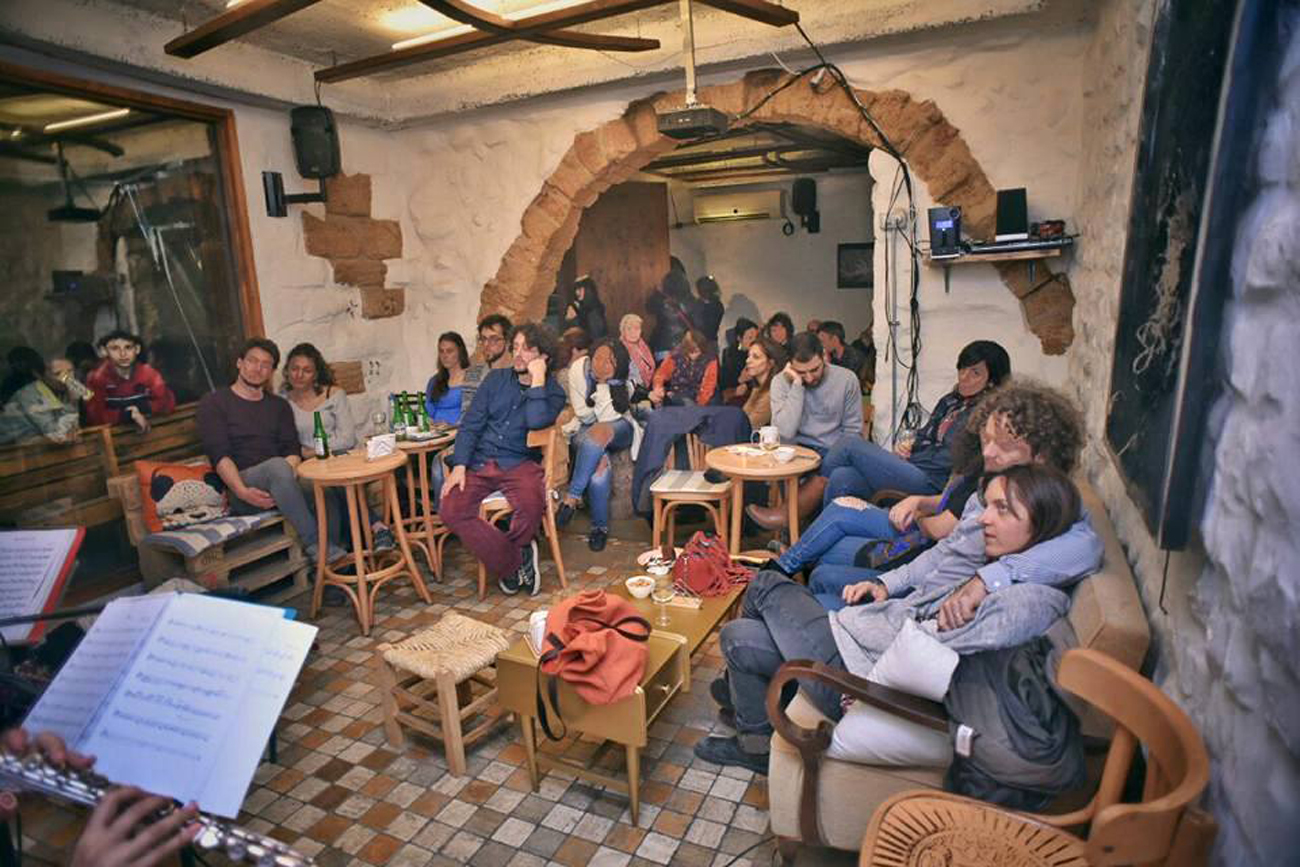
Warche 13 ( +961 3 467 795 ) is a trendy café with an active artistic community. Situated in El Mina, Warche 13 is a great place if you’re looking for organic yogurt or a sandwich. Enjoy their regular events, which range from open-mic poetry nights to live music.
If you want ice cream made the old-fashioned way, head to Orchid Ice Cream ( +961 70 044 680 ) for a cone filled with fresh ice cream and smothered in pistachios. Established in 1919, Orchid is well known for producing its ice cream by hand and using local ingredients, like strawberries, rose water, pistachio and lemon, to make a refreshing sorbet or creamy treat.
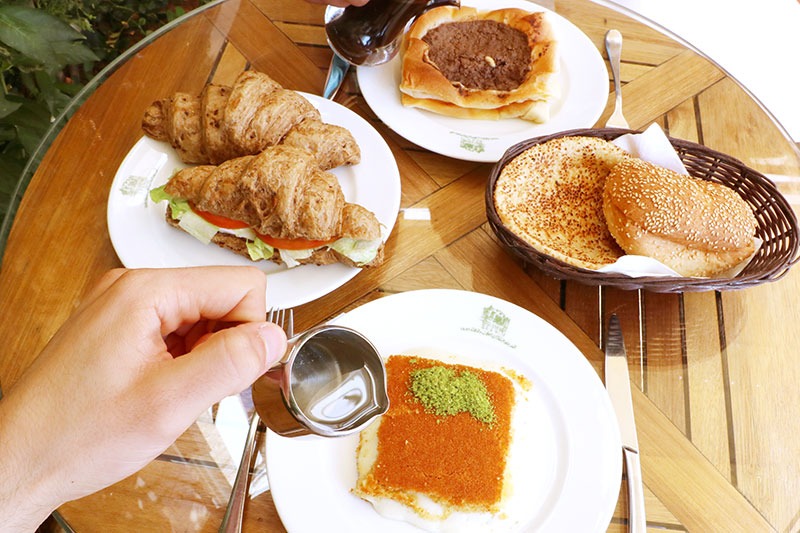
Hallab 1881
You haven’t fully experienced Tripoli until you’ve tried the delicious Lebanese sweets at Hallab 1881 ( +961 6 444 445 ) a family-run business. Kasr El Helou, the firm’s flagship store, is considered one of the city’s most renowned landmarks, so make sure you stop for some of their famous baklawa , maamoul and knefe .
Where to Sleep
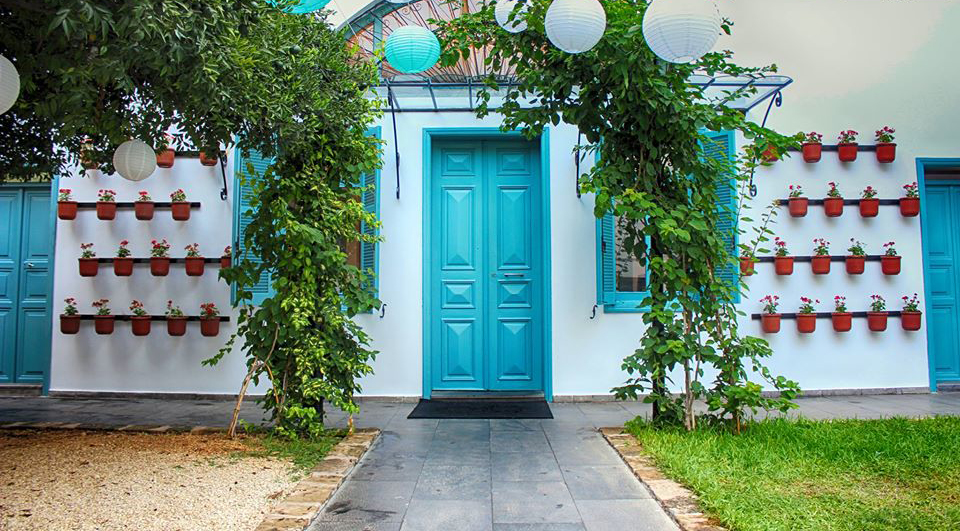
Article published on January 6, 2021
Article edited on October 23, 2021
Arthaus Brings Understated Glamour to Gemmayze, Beirut
Mini guide to deir el qamar, you may also like, 5 epic waterfalls in lebanon to visit this..., how to spend 24 hours in beirut, beirut’s burgeoning libraries, 7 nature reserves to visit in lebanon, top things to do in bcharreh al arz, faraya and kfardebian: 10 things to do there, the ultimate winter guide in lebanon, coffee lovers’ guide to north lebanon, top ski destinations in lebanon, exciting new restaurants in lebanon, leave a comment cancel reply.
Save my name, email, and website in this browser for the next time I comment.
Must-see attractions in Tripoli

An enticing blend of tradition and modernity, the web of narrow streets of Tripoli's port quarter makes for wonderful strolling. The Phoenician city stood…

Khan Al Khayyatin
One of the most beautiful buildings in the old city, this semi-open vaulted-roofed khan was formerly a Crusader hospital and is today a beautifully…
Citadel of Raymond de Saint-Gilles
Towering above Tripoli and the river, this Crusader fortress was originally built during the period from 1103 to 1104. Burned down in 1297, it was partly…
Hammam Al Jadid
While certainly not new – Hammam Al Jadid was built around 1740 – it was in use until the 1970s and is very well preserved. It was donated as a gift to…
Madrasa Al Qartawiyya
Attached to the east side of the Great Mosque is Madrasa Al Qartawiyya, which was built by a Mamluk governor of the same name in the early 1300s, over the…
Khan Al Misriyyin
Believed to date from the 14th century when it was used by Egyptian merchants, this dilapidated khan is home to several friendly soapmakers, including,…
Taynal Mosque
Standing on its own to the south of the souqs on the outskirts of the Old City, but well worth the walk, is this restored green-domed mosque by the…
Hammam Ezzedine
Used from the 13th-century right up until 1975, this historic hammam is an extensive complex that is undergoing an elegant restoration. There's a…
Great Mosque
Built on the site of a 12th-century Crusader cathedral and incorporating some of its features, this mosque has a magnificent entrance and an unusual…
Souq Al Attarin
This long straight souq is fragrant with perfumes and spices. It segues into the main food-selling portion of the market area.
Souq Al Haraj
At the northern end of the old town is Souq Al Haraj, which is thought to have been built on the site of a Crusader church. Its high, vaulted ceiling is…
Khan As Saboun
In the centre of the souq, the Khan As Saboun was built in the 16th century and first used as an army barracks; since then, it has for generations…
Al Muallaq Mosque
You have to glance up to see this small and unusual 14th-century mosque with its delicate octagonal minaret. The prayer hall unusually stretches across…
Madrasa Al Nouriyat
On a little square in the vicinity of the Great Mosque, this religious school has distinctive black-and-white stonework and a beautiful inlaid mihrab …
Souq Al Sayyaghin
Tripoli's gold souq gleams bright with jewellery displayed in dozens of shopfronts. There are some very high-quality pieces, though they are mostly traded…
Souq An Nahhassin
Gleaming brassware characterises this market street, just outside the cramped central area of the souq. You'll need plenty of tenacity and elbow grease to…
- 1 Understand
- 3 Get around
- 4.1 Old City
- 4.2 Palm Islands Nature Reserve
- 4.3 Other attractions
- 11 Stay safe

Tripoli ( Arabic : طرابلس, Trablus ) is a city in northern Lebanon .
Understand [ edit ]
Get in [ edit ].
From Beirut's Charles Helou station, you can either take a bus (all destinations are written in Arabic. Ask around for the "Trablos Express"), share a taxi with others or hire your own taxi (you'll pay for 4 people). It is also possible to take a minibus from Beirut's Cola station or Daoura station.
The 34.451858 35.828516 1 Port of Tripoli is mainly for freight and not very friendly for passengers, but has Lebanon's only scheduled passenger ferry, run by Med Star.
Get around [ edit ]

As other cities in Lebanon, Tripoli has an abundance of shared "service" taxis, which is basically every car with a red numberplate. You may share one with others in the direction you are heading. Any trip within central Tripoli will cost 1,000 LL. If going a bit further you might be asked to pay "double service" which is 2,000 LL. If asking for a "Taxi" and not "service" the driver will think you want the car for yourself and will charge you the price of four passengers.
See [ edit ]
Old city [ edit ].
The Old City is mainly a Mamluk city. The urban form of Mamluk Tripoli was dictated mainly by climate, site configuration, defense, and urban aesthetics. The layout of major thoroughfares was set according to prevailing winds and topography. The city had no fortifications, but heavy building construction characterized by compact urban forms, narrow and winding streets for difficult city penetration. Residential areas were bridged over streets at strategic points for surveillance and defense. The city also included many loopholes and narrow slits at street junctions. There are old souqs (markets) and khans (caravanserai), hammams (Turkish baths), citadels, great Mamluk mosques and madrassas. A vibrant area of the city, visitors will find an agglomeration of jewelers, perfumers, tanners, soap-makers and tailors within the narrow streets. The city is known for its production of soap, copper and brass trays, engraved wooden boxes, furniture, and sweets.
Palm Islands Nature Reserve [ edit ]
Located about a 30 minute boat ride off the coast of Tripoli, the Palm Islands Reserve is composed of three small islands. Established as a national nature reserve in 1992, the site is recognized as an Important Bird Area by Birdlife International. It is also an important egg-laying site for endangered sea turtles.
Other attractions [ edit ]

- 34.438 35.8238 11 Rachid Karami International Fair . Partially finished fairgrounds, designed by Oscar Niemeyer (architect of Brasilia ). They were built for a World's Fair, but the civil war stopped the construction work in 1975. In 2023 the place was added to the UNESCO World Heritage List . ( updated Sep 2023 )
Do [ edit ]
Every Sunday afternoon families will gather to the shoreline of Tripoli where the road meets the ocean and they walk on the sidewalk provided while the sun goes down. They'll be vendors with food, and bike rentals for those who want to ride. Its a peaceful and relaxing time, where some will sit at the cafe's smoke hookah and watch the sunset. Its a must for a sweet finish at the end of your day.
For outdoor activities, go to the beaches of Tripoli like: Miramar, Al Naoura, Palma Touristic Center and Las Perlas.
- El Mina old town: Inhabited since the 14th century B.C., El Mina was ruled sequentially by Persians, Alexander the Great's successors, the Romans, Mamluke Muslims, Turkish Ottomans, and the French. As a result, the old town is filled with history, including mosques and churches, a Caravan Serail, a Mamluk Fortress, and souk (traditional marketplaces).
- Palm island reserves: If you are enchanted by marine ecology, be sure to spend some time in the Palm Islands Reserve, comprising three uninhabited islands located approximately 5km northwest of El Mina. This Mediterranean marine ecosystem provides a perfect breeding ground for the endangered Green and Loggerhead Turtles, a nesting place for over 300 species of migratory birds (including many rare and endangered species), and a home for the endangered Mediterranean Monk Seal.
- Zambo carnival: Each year on the weekend preceding Clean Monday (usually between March and April), hundreds of locals organize and participate in lively musical parades wearing outfits and masks. The origin of this old tradition is unknown but some people link it to local Greek families (Greek Mardi Gras). More information: El Mina tourism center [dead link]
Learn [ edit ]
Buy [ edit ].
- The Souks The most incredible items can be found in the souk, from books to imitation shoes (Adidas, Nike). There are stalls upon stalls of pure kitsch and others of real taste and quality. One street have shops specializing in Islamic clothing, chador-like dresses and other traditional non-western clothing can be found. In contrast, just around the corner you may find shops selling sexy lingerie. Suddenly you find yourself in Souk el Sayagheen, the gold and silver market. It's quite magical to look down this dark little street where the shops cast enough light for the jewellery hanging outside in curtains of gold and silver to glitter softly. or maybe "Khan Essaboun! The soap market, where you can buy aromatic & therapeutic, as well as decorated soaps.
Eat [ edit ]
Tripoli is famous all over Lebanon for its sticky oriental sweets. Many Beiruties visit Tripoli en group on Sunday mornings to have breakfast at "Hallab". Confusingly to tourists, many sweet houses in Tripoli carry the name "Hallab" in one way or another. This is either because they are legitimate descendants of the famous nineteenth century sweets maker of the same name, or simple free riders trying to profit from the name's reputation. Two however stand out: Rafaat Hallab 1881 , and Abdel Rahman Al Hallab . A visit to either will satisfy the most demanding of sweet teeth.
In the beautiful, wide and trees-planted ElMina Road, you can find many cafes and restaurants to satisfy your hunger.
- Seafood Sandwich Shop , El Mina foreshore ( It has little dolphins jumping on either side of the name - that is in Arabic ). Don't miss the seafood sandwiches in El Mina; there's spicy-fish, crab and crayfish, among other dishes. Next to a corner-shop with Pepsi signage. There are a few shwarma restaurants in a row by the waterfront next to the port. Try the one that is packed with people waiting - there's a reason for that. There are a few casual seafood restaurants further along.
- Homos & Foul (Homs and beans) . One of the famous breakfast dishes in Tripoli is Homs and beans, you will find many old and new style restaurant, on the main streets and inside the old areas of the city.
Drink [ edit ]
Tripoli Has the best coffee shops street in all of Lebanon (Mina Road). With more than 100 coffee shops and restaurants on both sidewalks. For bars and pubs, Mina neighborhood would be the best place for a glass of wine or a pint of beer with smooth Jazz music.
- Cava Mino: the first pub in Mina and the only place for Jazz and good music in the area. The pub has a great ambiance (a nice outdoor space during summer). A poetry night is hosted once a month. The owners and staff are very friendly, and it has been a very popular place for locals as well as tourists. The menu offers a tasty collection of appetizers.
- Gosha: A pub and restaurant specialized in cocktails
- ASkale restaurant(Snack-bar):A leading restaurant offering delicious meals, friendly staff and cozy environment, located in the heart of El Mina old town, the newly renovated Laban street.
Sleep [ edit ]
- 34.441191 35.82203 1 Quality Inn Tripoli Hotel ( Next to the International fair ), ☏ +961 6 211 255 . ( updated Aug 2017 )
- Via Mina Pension
- 34.436099 35.839926 2 Al Koura Hotel , Al Tall Street ( off Tall St, 2 blocks South-East of the Clock Tower ), ☏ +961 3 371 041 , fax : +961 6 425 451 . A family-owned pension in the center of Tripoli. The friendly owners speak French. Clean and modern. Breakfast, Wi-Fi included. Dorm LL30 000, private from L50 000 . ( updated Aug 2017 )
- 34.436511 35.839573 3 Pension Haddad ( Near Hotel Al Koura ). Located in a historical building near the main square. Dorm $10, single $15 .
- Hotel Al Ahram ( From clock tower walk around the flags to the other side ). Dorm $7.50 . ( updated Aug 2017 )
- 34.395495 35.797069 4 Miramar Beach Resort ( Along Old Beirut Road ), ☏ +961 6 400 704 . Resort hotel along the coast, a few kilometers south of the city. ( updated Aug 2017 )
Stay safe [ edit ]
Due to the spillover of the civil war in Syria , the situation in Lebanon, including Tripoli, has deteriorated. Most of governments around the world have issued travel warnings to Lebanon. While the situation has improved since then, it is suggested to plan carefully and visit with a local guide. Some turbulent neighborhoods, including the Jabal Mohsen and Bab-al-Tabbaneh neighborhoods, are not safe.
Go next [ edit ]
- Ehden is beautiful town at the top of the northern mountains of Lebanon some 30 km away from Tripoli. Popular during summer and a main destination to sample Lebanese cuisine.
- Batroun is home to lots of historic churches, both Catholic and Greek Orthodox. The town is also a major beach resort with a vibrant nightlife. About 22 km from Tripoli.
- UNESCO World Heritage Sites
- UNESCO tag to be fixed
- Has custom banner
- Has map markers
- Has mapframe
- Articles with dead external links
- Eat listing with no coordinates
- Sleep listing with no coordinates
- North Lebanon
- All destination articles
- Usable cities
- Usable articles
- City articles
- Has Geo parameter
- Pages with maps
Navigation menu
Watch The Wanderer
Essential tripoli.

Tripoli Is Great For
Eat & drink.
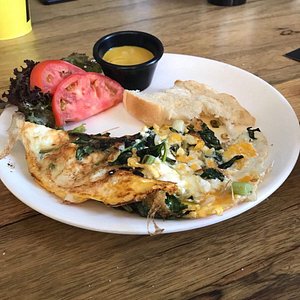
Art & history
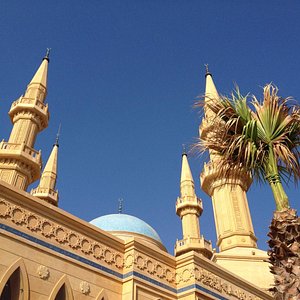
- Miramar Hotel Resort & Spa
- Lamunia Hotel & Wellness Spa
- Palma Beach Resort
- Hotel Via Mina
- Beit El Nessim
- Abdul Rahman Hallab & Sons 1881
- Ezzeddine Hammam
- Citadel Saint Gilles (Qal'at Sinjil)
- Khan Al-Khayyatin
- Souk Al-Harajb
- El Mina Port
Tripoli, Lebanon: A City With Rich History, Amazing Facts, and Things to Do
- Al-Mina Aquarium
- Al-Mina Beach
- Al-Mina Castle
- Al-Mina Citadel
- Al-Mina Clock Tower
- Al-Mina Corniche
- Al-Mina Mosque
- Al-Mina Museum
- Al-Mina Old City
- Al-Mina Old Souk
- Al-Mina Park
- Al-Mina Sea Castle
- Al-Mina Souk
- Al-Mina Zoo
- Al-Nour Mosque
- Al-Nour Souk
- Al-Nour Square
- Tripoli Castle
- Tripoli Grand Mosque
- Tripoli Souk
Amazing Facts
Things to do.
- Aammiq Wetland Nature Reserve
- Anjar National Park
- Beiteddine Palace and Museum
- Horsh Ehden Nature Reserve
- Jeita Grotto National Park
- Jezzine Waterfall Nature Reserve
- Qadisha Valley National Park
- Tannourine Cedars Forest Nature Reserve
- Tyre Coast Nature Reserve
- Baalbek
- Batroun
- Bcharre
- Beirut
- Deir el Qamar
- Faqra
- Habboûch
- Jbail
- Jezzine
- Jounieh
- Kaslik
- Kfarhbab
- Kfarshima
- Kfarzebian
- Nabatieh
- Sidon
- Tripoli
- Zahle
- Aammiq Wetland
- Anjar
- Beit ed-Dine
- Beiteddine Palace
- Byblos
- Cedars of God
- Harissa
- Jeita Grotto
- Mzaar Kfardebian
- Qadisha Valley
- The Chouf Cedar Reserve
- The National Museum of Beirut
- The Roman Ruins of Baalbek

- Old Lebanon

20 Things To Do In Tripoli – Lebanon (Part1)
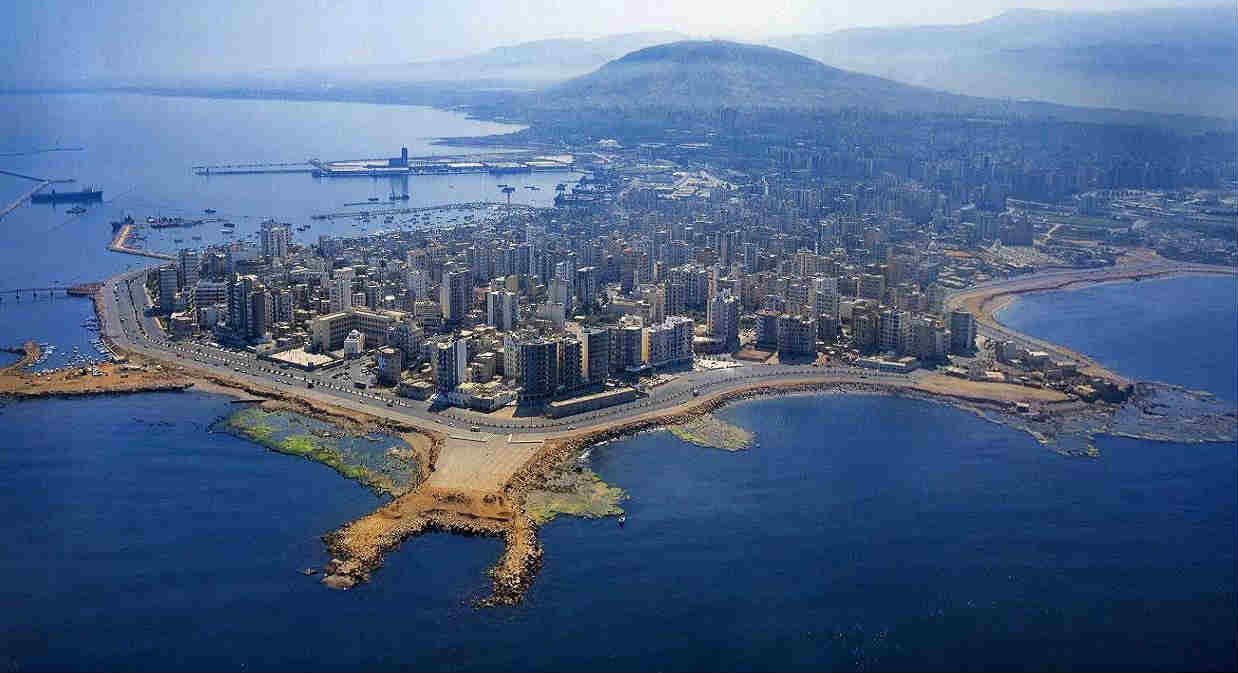
Tripoli is Lebanon’s second-largest city and despite being one of its poorest, it is rich in diversity and is a beautiful city to explore. There are always new places to visit and new things to do and a sense of community in the city. I’ve been going to Tripoli for 15 years or more and I discover a new thing to do or a new place to visit almost every time so I decided to compile all these activities into two blog posts based on my past experiences and a little help from my good friends and Tripolitans Natheer, Hayat and Zaher.

In this region, there are always visible aspects or events presented by the Mina Peace Committee . This organization aims to ameliorate the city on different levels, as well as encourage relationships between people in order to build a safer and more peaceful environment.

The big mosques and churches in both Trablos and Mina, which are plenty. Usually mosques and churches share the same wall in mixed areas. Even streets in Muslim parts have names of saints, while others in Christian areas have Muslim names. The Great Mosque, Abu Baker Al Siddik Mosque, Al-Bertasi Mosque, the Taynal Mosque and The Cathedral of St George (Al Mina) are worth visiting. There’s also a church street where you can find the oldest Maronite church in Tripoli, St Micheal which was built in 1889. The oldest church in Tripoli is Saydet al Hara in Tabbaneh which dates back to the 13th century.
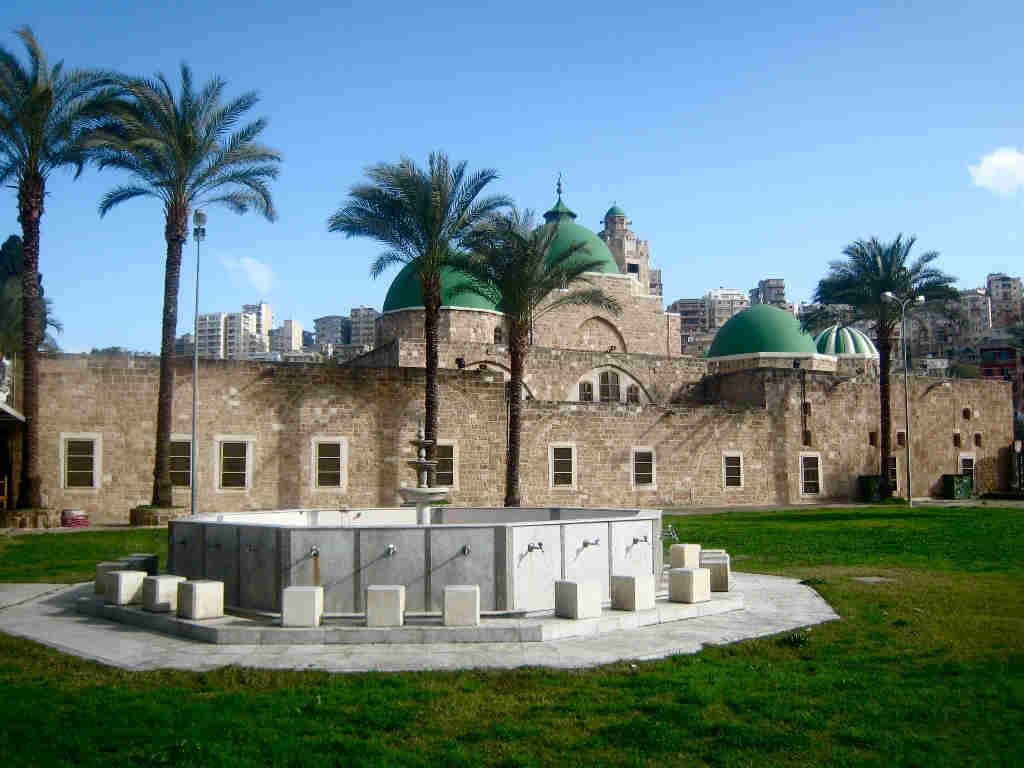
For the past years, The Old souks committee (lijnat el aswak el Kadima) has been working on cheerful renovations, friendly environment ameliorations as well as fun outdoor performances in order to make the Old Souk a more enjoyable and peaceful visiting spot for all ages, especially children.

In addition to the heartwarming results caused by the old souk Committee , a band called “One Voice Team ” has been nothing less than active in this northern city of Lebanon. Scared by the pain and the fear they see around them, this band of three musicians encourage the society around them through heartfelt gatherings with children of all ages, as well as, as you can see above, joyful painting of staircases across the city which aims to bring people together and make the environment friendlier.
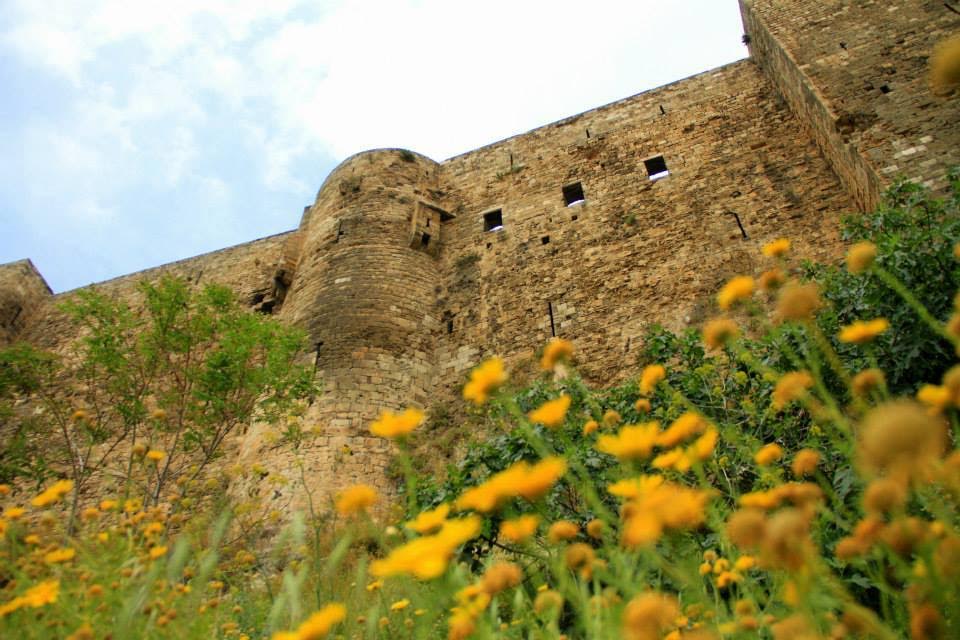
PS: The Lebanese Army has been using it as a base for security reasons but anyone can visit anytime.
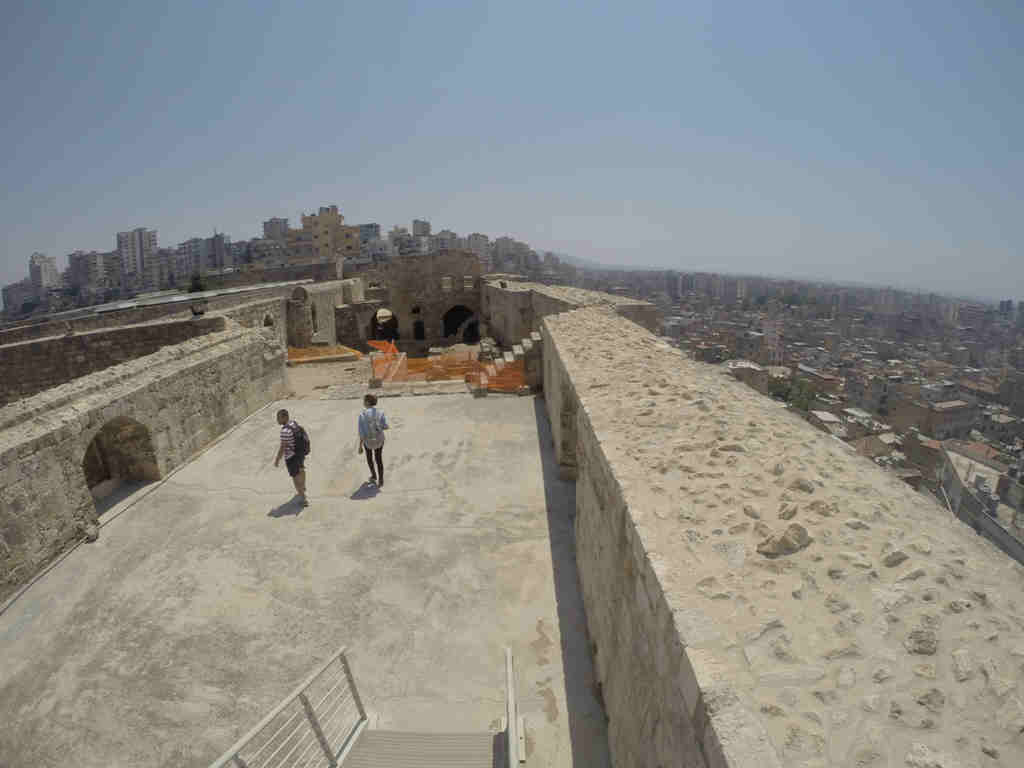
Part 2 will be up in few days.
Related Posts

‘Raseef’: An Initiative to Transform Bliss Street ...

The Mar Mikhael Piazza Project ...

Heritage Buildings of Beirut Placed on 2022 World’s Monuments ...

A 3D Recreation Of The Egg Building in Beirut

Aerial Shots of the New US Embassy Campus in ...

Beirut House Awarded Best Interior Design at the AD ...

Henry Loussian’s Museum is Now Open! ...

Drone Footage of The Mokhtara palace ...
You sure know how to oversell a city. Tripoli is ugly, dirty and uninteresting. Don’t trick your readers into thinking otherwise. Kaak and soap don’t justify the trip to this northern shirt hole. And Hallab has a branch in Beirut.
rou7 ya 7abibe nte7er abel ma tehki 3a tripoli akid enta wehed 3onsore ma btestehal yenrad 3lek ne7na wled tripoli men lebnen iza 3arfin w ahsan men 8ayrna bi 10000 mara w 3ayshin bel mina eslem w masi7iye wala arwa2 men hek fa rou7 sheflak hakim 3al kereh li 3emi albak
Yeah, right. The constant clashes between Jabal Mehsin and Tebbeneh are a testament to this so called coexistence you speak of. Not to mention that the biggest number of Islamists originate from your city. But anyway, that wasn’t my topic. I’ve been to Tripoli and found it very filthy and ugly, with little points of interest. It looks like an Indian slum, except it’s infested with Asir look-alikes. Tripoli should join Arsal and declare independence because they have nothing to do with Lebanon.
We all know the reasons why the clashes has started, and why it ended anyway?! Except u’re so ignorant to understand thats not my fault…u’ re right Tripoli should’ve been declaring independence for it has been treated as a 2nd class city since Lebanon was established, but it always preferred to stay the patriot city… btw, 3 trucks full of rubbish have arrived from jounieh to be put in tripoli… see how u still need Tripoli 🙂
If u came from Europe then you are right it’s dirty and chaotic… but if you are Lebanese then stfu because you stink w ri7etkon weslet lal sin. W blnesbeh lal jabal weltebneh unless manak ajdab bta3ref ena war2a eklimiyeh biarkowa mn bara w jowa w trablos ma khasa fiya. 3a ases ya 3ayni be2i lsha3b l lebneni 3ayesh in peace kl 3omro lek lsha3b l lebneni faza3 biba3do aktar mn de3esh rou7 s2al l mami wel papi ja3ja3 w 3on shu 3mlo bi ba3ed wkam da7iyeh bari2a matet w s2alon kamen 3an shu 3mlo l owet w bet franjiyeh aw shu sar ben 7ezb alla w 7araket amal … essa kl wa7ed mtl bitch by7kik 3an lsharaf w howeh ajdab w ahbal mn hek ma3ad fi. W 3a fekra akid li msawar hal sowar msh mkanas w mnadaf w 3amel photoshop lal sowar #ahyahabileh
I disagree. I visited Tripoli in 2005 and loved it. The souks were in good shape then, and great to explore. Hallab was a delight, but even the little fast food falafel places were wonderful. I loved the cafe by the square near El Tal, where people were very kind to me and recommended places to visit. A really nice man we met there took us up to the mountains nearby which were delightful. I was just reminiscing about Tripoli and had to explore it online when I heard on the radio about the twins painting Salam on top of buildings there. Check it out.
I enjoyed reading the site . Although I’ve lived in Tripoli (35 y ago) for 2 and half year ,I was not familiar to all the places u mentioned. Felt homesick and looking forward for part 2. Negative comments will always be. Tripoli is Tripoli ,nothing more nothing less
Thank you for your effort !
6 years ago I lived in Tripoli, and honestly I hace never thought of Tripoli as an interesting city or as having any interest at all, but after reading this article I felt like coming for a visit and trying to see a different side of the city … And it is beautiful! Well it’s not colombia or japan but it definitely has it’s charm. I mean, when you’re feeling luke getting out of the city you can just go to the port and have to trip to the islands, or one of the many beach resorts. Stay at the Via Mina hotel in old Mina, which is a charming hotel. Wether you’re a man or woman put on a traditional abbayeh, get a history book and travel through time in the old Tripoli! So how to say that ?
Tripoli is a great city, but it’s heart is conflicted! To see it’s beauty you have to make an effort, take a step back and see it from a different point of view! Don’t be a snob, you are NOT coming in to see a modern, 100%perfect occidental or asian city. Rather you are taking a trip to an ancient city, with a lot of very different communities, trying to naviguate it’s way into a modern world and a new Lebanon. Things get bumpy along the way for sure. But it’s fucking interesting.
Leave a Reply Cancel reply
Your email address will not be published. Required fields are marked *
This site uses Akismet to reduce spam. Learn how your comment data is processed .

- ARCHITECTURE
- ARCHITECTURE GUIDES
- WINTER DESTINATIONS
- THE ISLANDS
- BOOKS ABOUT GREECE
- BOOKS ABOUT CHINA
- 3D PUZZLES OF FAMOUS BUILDINGS
How to Visit Tripoli and Byblos on a Day Trip From Beirut
Some countries are all about nature. Others house outstanding cultural sites. Lebanon is one of the latter. The tiny country of some 4000 square miles (10 000 km2) is so densely populated, that it seems a giant metropolis covers the entire coast.
Most tourists visiting Lebanon stay in Beirut and go on day trips to its historic cities and ancient sites. We kind of did the same thing! One day we visited Baalbek , and another one we went to Sidon and Tyre .
However, perhaps our most authentic experience was our visit to Tripoli and Byblos on a 2 day trip from Beirut. Though the two places are quite different, both are equally fascinating.
Day Trip From Beirut to Tripoli
We were a bit hesitant about visiting Tripoli. Not because we didn’t find it attractive enough, but rather for safety issues. The British foreign ministry advises against traveling there, so we researched a bit, and decided it was safe enough!
The only route in Lebanon used by comfortable buses on a fixed schedule is the one that goes from Beirut to Tripoli . Buses are new and depart mostly on time. Buses leave from Beirut’s Charles Helou Station , tucked under a large motorway.
Take note that finding the station can be tricky. Thus, we suggest taking a taxi or an Uber to get there. Though the two cities are only 50 miles (80 kilometers) apart, the journey can take between 1,5 and 3 hours (traffic jams are quite common in Lebanon).
Tripoli City – Tarabulus, Lebanon
Most cities in Lebanon have two very different names, one in English and one in Arabic. Take note that some locals know only the Arabic names, so it’s useful to learn them beforehand.
Tripoli is called Tarabulus in Arabic, a common name for several cities in different countries. With a population of roughly 300 000, Tripoli is the second-largest city in Lebanon and the economic center of the north. Unlike Beirut, in Tripoli, there is not much tourism.
It seemed to us somewhat neglected, with not much a construction boom. On a positive note, the city is 100% authentic and has several interesting attractions. Besides, we felt privileged to be two of the few tourists in town.
Things to Do in Tripoli, Lebanon
Old tripoli souk.
The heart of old Tripoli is its large medieval souk . Getting lost in souks is one of our favorite things to do, be it in Tripoli (Lebanon), Fez , or Damascus . What makes it special, is that it’s a real medieval souk still in use today.
You can smell the scent of past centuries while interacting with the local community. Each of the 9 different souks that make up the souk is for a different product, including food, leather, gold, furniture, soap, and perfumes.
These are Attareen, Bazerkan, Haddadin, Haraj, Kameh, Koundarjiyeh, Nahhasin, Samak, and Sayyaghin. Additionally, bathhouses and caravanserais populate old Tripoli. The city’s oldest mosque, Al Mansouri is here too.
Tripoli Castle (Citadel)
Another place you should not miss on your trip to Tripoli is its Castle, also known as the Citadel of Raymond de Saint-Gilles . The biggest historical site in Tripoli is also one of the largest and oldest military fortresses in Lebanon.
Though many people believe the crusader and count Raymond de Saint Gilles built it, the fortress is much older. The Arab commander Sufyan Ben Mujib built it in 636. During Ottoman rule, medieval walls were destroyed to reconstruct the fortress extensively.
Today, it belongs to the Lebanese army, so you will see soldiers passing by. We spent some time wandering about, admiring the uninterrupted views of the whole area.
Tripoli Beach
Tripoli, like other cities in northern Lebanon, doesn’t have much of a beach. To the north of the city, there are is an industrial and agricultural area. A large boulevard with a seaside promenade surrounds the peninsula where el Mina is.
Though the sea is there, it is dirty, and there are no beach facilities. To get a glimpse of what a real beach looks like, you should head to some of the private resorts south of the city. Most of them work only through their website, but we had a bad experience with that.
Hence, we recommend booking through well-known hotel sites like Booking. There is only one option, quite nice, the Miramar Hotel Resort and Spa . The closest public beach is in the town of Chekka , but there are two large factories nearby.
El Mina, Tripoli’s Seaside Neighborhood
One of the things we loved about Tripoli is that it doesn’t have one but two old towns! Besides Tripoli’s ancient city center, there is another one in the coastal neighborhood of El Mina . Though administratively an independent town, it is part of the city.
Historically, El Mina was home to the ancient city of Tripoli, but when the city moved inland, it became its port. The atmosphere here is quite different, laid back, and relaxed. You can easily forget you are in a bustling metropolis.
Again, there are some interesting old buildings, charming cobbled streets, and great coffee shops. The Al Tamathili Caravanserai is its most distinguished historic building.
What Else to Do in Tripoli
As you can imagine, there are plenty of other things to do in Tripoli, Lebanon’s northern metropolis. The city boasts several nice fountains for you to discover.
Tripoli’s prettiest fountain is inside the Al Manchieh Park, in downtown Tripoli. The famous Tripoli Clock Tower is there too. The Ottomans built it in 1906 as a gift to Tripoli.
Another interesting, but unusual sight, is the Tripoli International Fair . The brilliant Brazilian architect Oscar Niemeyer designed it, but the Lebanese civil war broke, so it was never finished. Nevertheless, it is well worth visiting this outstanding modern architecture.
Hotels in Tripoli, Lebanon
As mentioned above, we booked a hotel room in downtown Tripoli, but when we arrived they didn’t have available rooms. Slightly disturbed by the experience and the lack of hotels in Tripoli, we decided to check other cities in Lebanon and finally booked a place in Byblos.
If you do decide to spend a night or two in Tripoli, there is only one place downtown that you can book online: the SEED Guesthouse .
In El Mina, there are two nice options, but quite pricey. Both the Via Mina Hotel and the Azur Suites Hotel & Apartments are beautiful old houses with even nicer gardens.
Day Trip From Beirut to Byblos
Unlike Tripoli, Byblos is quite touristy and safe. To get from Beirut or Tripoli to Byblos, you can take a regular bus . In Beirut, they leave from Charles Helou Bus Station. On the other hand, in Tripoli, they leave from the Bus station on Abdul Hamid Karami Square .
However, most tourists visiting Byblos on a day trip take a minivan at Beirut’s Cola Junction . Minivans are the cheapest and most frequent means of transportation.
There are constant traffic jams, especially near Beirut, so travel times vary greatly. Both buses and minibuses stop at the national motorway 51. From there, it’s a 5-minute walk to downtown Byblos.
You can also visit Byblos on a day tour .
Byblos City – Jbeil, Lebanon
As mentioned above, most Lebanese cities have different local names. Byblos is called Jbeil in Arabic, a name commonly used throughout Lebanon. Unlike Tripoli, Byblos is a small city of some 40 000 people.
Its proximity to Beirut and large tourist offer, make it an ideal holiday destination. Byblos hosts a very nice old town, several sandy beaches, ancient ruins, and lively nights.
Bear in mind that Byblos is Lebanon’s prime tourist destination, so it can get pretty crowded, especially during the day and weekends. Therefore, it’s best to spend a night on a weekday in this lovely city!
Things to Do in Byblos, Lebanon
Byblos souk.
Byblos epicenter is the old town with its ancient souk . Large medieval city walls, remnants of the time of Crusaders, surround old Byblos. The souk is quite different from the one in Tripoli. It is small, thoroughly reconstructed, perfectly clean, and quite touristy.
While you can buy original handicrafts in Tripoli, in Byblos’ market you can buy souvenirs and other popular items. The best place for shopping is the lively Ottoman Street , the souk’s main thoroughfare.
What we loved the most about this souk is the colorful cafes and restaurants set in beautiful gardens. Everything changes at night when shops turn their colorful lamps on, and the music starts.
Byblos Castle (Ancient Byblos)
One of the best things to do in Byblos is to visit its ancient site. Byblos has been continuously inhabited since the 5 th Century BC, making it one of the longest inhabited places in the world.
Ancient Byblos is a large archeological site that includes the Phoenician Temple of Baalat Gebal and the Temple of the Obelisks. However, crusaders built the castle in Byblos in the 12 th Century on top of the Roman ruins.
There are remains of several Egyptian temples and a Roman amphitheater next to Byblos Castle . Today the whole area belongs to the Byblos Site Museum.
Byblos Beach
Byblos is a popular beach destination with several long sandy beaches on both sides of the city. North of the old town, you’ll find Bahsa Beach. The so-called Byblos Public Beach is to the south. Both are nice sandy beaches with deck chairs, umbrellas, bars, and hotels.
The atmosphere is quite authentic, but the beaches are dirty. Though we tried to dip in the sea, we couldn’t get over the amount of trash. Thus, this is not the right place to swim. Maybe you are lucky somewhere else.
However, that’s no excuse not to have a good time. Order a drink at a beach bar and enjoy the sunset. Partygoers will be happy to know that the famous C Flow Beach Resort is south of Byblos.
What Else to Do in Byblos
If you are wondering what else to do in Byblos, wonder no more. Byblos was an important city during Phoenician, Persian, Roman, Byzantine, and Ottoman times. Fortunately, you can still see heritage from those periods.
Once done with the souk and the ancient site, visit its interesting churches and mosques. The city’s nicest church, St John the Baptist is from the 12 th Century. Used as a stable after the Muslims conquered the area, the Maronite community got it back in the 17 th Century.
The old Sultan Abdul Majid Mosque is from the 17 th Century. It bears the name of Sultan Abdul Majid, who renovated it. Another interesting place to visit is the lively Byblos Port (Harbor). Many Lebanese believe it’s the oldest port in the world. If you are into museums, don’t miss the Byblos Wax Museum .
Hotels in Byblos, Lebanon
In our opinion, most hotels outside Beirut are poor value for money. Either we are talking about old hotels in bad shape or nice overpriced ones. That’s why the majority of tourists stay in Beirut for their entire visit. Luckily, hotels in Byblos are amongst the best in Lebanon. There is a wide variety of accommodation in all categories, and you can book most of them online.
We stayed at the lovely Aleph Boutique Hotel , a step away from the old town and the beach. Our tastefully decorated room was comfortable and had fantastic views of the temple and sea. The hotel’s roof terrace offered probably the nicest views in Byblos.
If you are looking for luxury, stay at the Byblos Sur Mer , the best hotel in town. If you prefer to stay directly on the beach, the Ocean Blue Beach Resort Jbeil is your best option.
Related posts
The star of my 3 week Middle Eastern Holiday in 2004 was definitely Syria, but…
Turkey’s most famous region, Cappadocia, lies in central Anatolia, halfway between Ankara and the Mediterranean Sea.…
Georgia is in many ways an exceptional country. Outstanding pristine nature, wild mountains, clear blue…
2 Responses
Stuart Forster
I’ve read many positive articles and blog posts about the Lebanon and Beirut recently. It’s on my radar as a place to visit.
happyfrogtravels
Hi Stuart, Lebanon is a great country and somewhat off the beaten track. I warmly recommend you visit soon (in spite of all the protests going on). Cheers, M
Leave a Reply Cancel reply
Your email address will not be published. Required fields are marked *
This site uses Akismet to reduce spam. Learn how your comment data is processed .
- Middle East
- 7 Reasons Why You Should...

7 Reasons Why You Should Visit Tripoli Over Beirut

Freelance Writer
When people think of visiting Lebanon, the first place that comes to mind is Beirut. But while it is undoubtedly a beautiful city with fascinating people and amazing parties, some tend to forget Lebanon’s other major city, Tripoli . Here’s what you should keep in mind before crossing this coastal enclave with its own distinct atmosphere off your travel list.
The history.
Being on the coast of the Mediterranean, Tripoli was a cornerstone for civilizations. Phoenicians, Romans and Byzantines are only the beginning of the city’s rich cultural history. It is famous for its crusader fortress, the Citadel of Raymond de Saint-Gilles, which is a site among many. Littered around Tripoli are several old world Mosques, Hammamsand markets which date back to the Ottoman Empire. It is fascinating to see the Islamic heritage which persisted after the Ottoman rule in the city.

The label “second largest city in Lebanon” is misleading when it comes to Tripoli as it is a small city. It has a total area of 41 km squared and can be walked through easily. The amount of history in such space is amazing and makes for a busy town with bustling days and lively nights.
Contemporary history
The city is not touched by constant development and renewal. This makes for a curious change in architecture from north to south of the town. At the northern part of the city, visitors can walk through ancient markets surrounded by residential buildings which date back to the 1900s.
This stretches on to the center which is El Tal and is, in itself, another reason to visit Tripoli. This center is an amazing show of the city’s French influence during the 20th century. From there, buildings progressively get more contemporary and provide a visual proof of the city’s expansion throughout the years.

The culture
After the end of the conflict in Tripoli, it has been experiencing a rapid boom in cultural development. Places like Warche 13 are opening their doors to previously silent artists and poets. More cafes are inhabited by intellectuals looking for a deep conversation and a great cup of coffee. Don’t miss the chance to experience the city’s rise in popular culture.

Being a residential town, Tripoli is still full of small places for local food. Restaurants like Akra and Dannoun are a staple of the Tripolitan cuisine and are a must visit for anyone in Lebanon. The Ottoman influence, again, helped make the food in the North distinct from other places in Lebanon. So do not pass up the chance of eating a cheese filled Ka’akeh (bagel) from a food cart in Tripoli as the pastry started as a variation of Turkey’s Simit in this city.
Another little enclave within Tripoli, is Mina. While technically its own district, this small treasure is one of the city’s most prized places. Inner Mina is still untouched and begging the tourist to take a walk through its winding streets and bustling alleyways. It is the home of Warche 13 and Tripoli’s famous beachside coffee carts. The vibe is a modern flaneur ‘s paradise as the dreamy walkways definitely speak to your humanity.

Make sure to put Tripoli on the list of cities you’d like to spend a at least a day in. While Beirut is amazing in its own right, this city is a must visit for all culture lovers and those looking for a new adventure. Be a part of Tripoli’s awakening and meet its amazing people.
Since you are here, we would like to share our vision for the future of travel - and the direction Culture Trip is moving in.
Culture Trip launched in 2011 with a simple yet passionate mission: to inspire people to go beyond their boundaries and experience what makes a place, its people and its culture special and meaningful — and this is still in our DNA today. We are proud that, for more than a decade, millions like you have trusted our award-winning recommendations by people who deeply understand what makes certain places and communities so special.
Increasingly we believe the world needs more meaningful, real-life connections between curious travellers keen to explore the world in a more responsible way. That is why we have intensively curated a collection of premium small-group trips as an invitation to meet and connect with new, like-minded people for once-in-a-lifetime experiences in three categories: Culture Trips, Rail Trips and Private Trips. Our Trips are suitable for both solo travelers, couples and friends who want to explore the world together.
Culture Trips are deeply immersive 5 to 16 days itineraries, that combine authentic local experiences, exciting activities and 4-5* accommodation to look forward to at the end of each day. Our Rail Trips are our most planet-friendly itineraries that invite you to take the scenic route, relax whilst getting under the skin of a destination. Our Private Trips are fully tailored itineraries, curated by our Travel Experts specifically for you, your friends or your family.
We know that many of you worry about the environmental impact of travel and are looking for ways of expanding horizons in ways that do minimal harm - and may even bring benefits. We are committed to go as far as possible in curating our trips with care for the planet. That is why all of our trips are flightless in destination, fully carbon offset - and we have ambitious plans to be net zero in the very near future.

Guides & Tips
Why lebanon plans to revive tripoli's abandoned fairgrounds.

Operation Salam Sends a Message of Peace in Tripoli

Food & Drink
A guide to the best wineries in lebanon.

Architecture
Artist jad el khoury transforms beirut skyscraper with colour.

The Best Food and Drink Spots to Discover in Lebanon

Lebanon's Nahr Ibrahim Valley: A Hike Across Myth and Faith

The Most Beautiful Churches in Beirut

Meet Khansa, the Performer Redefining Masculinity in the Middle East

Fight Club of the Art World: Watch These Extreme Street Artists Battle in Beirut

The Top 5 Historic Street Food Spots in Beirut

Your Guide to the Beirut Art Fair

Film & TV
Nadine labaki on the chaos of filming ‘capernaum’ in beirut, culture trip spring sale, save up to $1,100 on our unique small-group trips limited spots..

- Post ID: 1272655
- Sponsored? No
- View Payload
Attractions and Places to Visit in Tripoli
For more information about these attractions, you can read or order onTop-Papers.com at https://top-papers.com
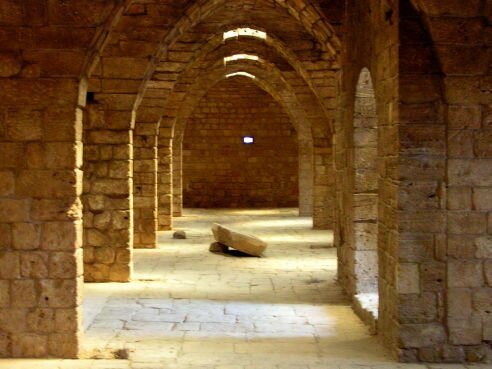
(Old Hospital) [1]
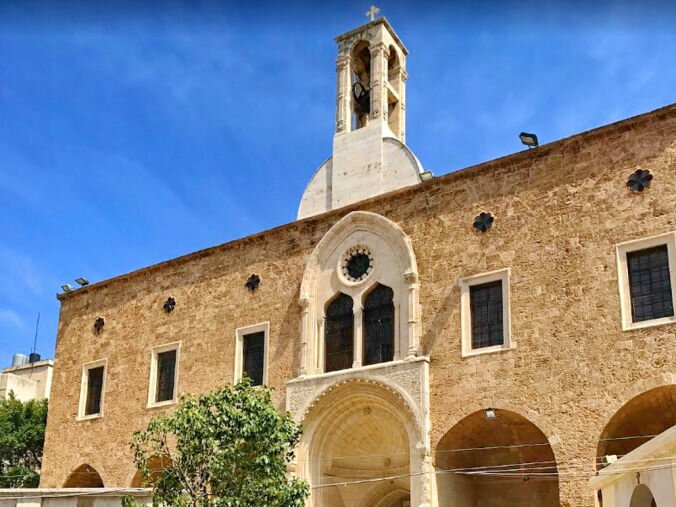
Churches and Cathedrals
Armenian Evangelical Baptist Armenian Orthodox ( built 1963 CE ) Beshara Catholic ( built in the second half of the 19th century, restored in 1992 CE ) Evangelical National Babtist ( built 1973 CE ) Greek Catholic Moutran Patriarchiate School Roum/Greek Catholic (Latin) Saint Efram Syriac Orthodox ( AlMina, built 1957 CE ) Saint Elie Orthodox Cathedral Saint John of the Pilgrims Mount Saint Georgios Catholic ( built 1835 CE ) Saint Georgios Orthodox Cathedral ( Dabbaghah District ) Saint Joseph Assyrian Catholic Saint Maroon Saint Mary Salvador Maronite ( AlMina, built 1889 CE, restored 1991 CE ) Saint Mary/Saydeh Maronite ( Tabbanah District ) Saint Michael Maronite ( located near the site of old College des Freres, built 1889 CE ) Saint Michael Maronite ( Qobbah District, 1926 CE ) Saint Michael Orthodox Saint Nicolas Greek Orthodox Saint Thomas ( Crusader, demolished, Baqar Island )
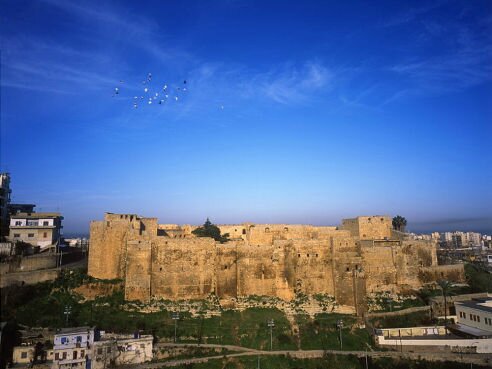
Citadel, The Tripoli
The Tripoli Citadel is perched on the Abou Samra Hill, embracing within its walls, stones, and inner courtyards, the successive historical eras it bears witness to, and gazing from its high vantage point on all that goes on in the city below... Read more
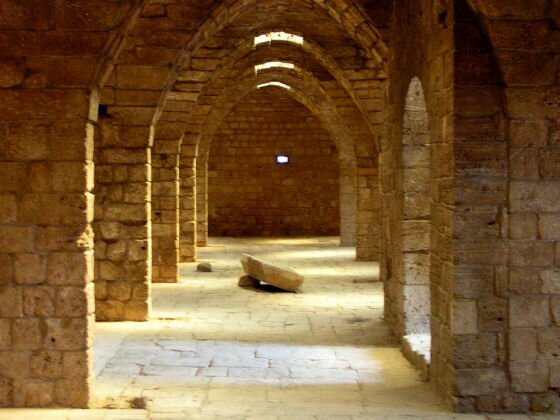
Clock Tower, The Tripoli
(Tell Square) [1]
Islands of Tripoli
Dabbaghah Homsi Mahatrah Mallahah Nouri Ouwaynat Tabbanah Taht AlSibat Tarbihah
Hammams ( Turkish Baths )
Aattar ( some traces ) Abed Aazem Dawadar Hajeb ( Mameluke, built by the Vice Sultan Governor Sayfuddeen Asandamor AlKurji 705 H/1305 CE ) Izzeddeen Jadid Kharafish ( within the Tripoli Citadel ) Nouri Nouzhah ( demolished ) Qadi ( demolished )
Historical Houses
Husein Defterdar Iskandari Shami Dar Saadeh
Khans ( Caravansaries )
Aarasat Aaskar Battikh Jadid Jawish Khashab Khayyateen Loubiya Ma'a Masriyyin Roummanah Rouzz Saboun Sha'er Tamathili ( AlMina )
Madrassas ( Historical Theological Schools )
Abi AlNasr AlYafi Aajamiyyah Ashrafiyyah Bshennatiyyah Burtasiyyah Dabbousiyyah Dahhan Dayem Allah Dubbaha Habbak Hindi Homsi Houjeyjiyyah Jawish Khatouniyyah Khayriyyah Hosn Kouriyyah Mahmoudiyyah ( alias, AlSanjak ) Mardaniyyah Mash'had Naml Nasiriyyah Nouriyyah Omariyyah Qadioglu Qadi Omar Qadiriyah ( includes a grave dated 759 H/1358 CE ) Qartawiyyah Rajabiyyah Sabbagh Sabsabiyyah Sanjakiyyah Saqraqiyyah Shamsiyyah Shouhada Tabsheh Tadmouriyyah ( alias, Sanjar AlHomsi, 725 H/1325 CE ) Thahiriyyah Touwashiyyah Obsolete and Demolished Madrassas Debban Haffar Joulaylatiyyah Koudsi ( currently used as a store house ) Masjed AlWattar Nasr Bin Aajbour Refaiyyah Sebt AlAattar Zourayqiyyah
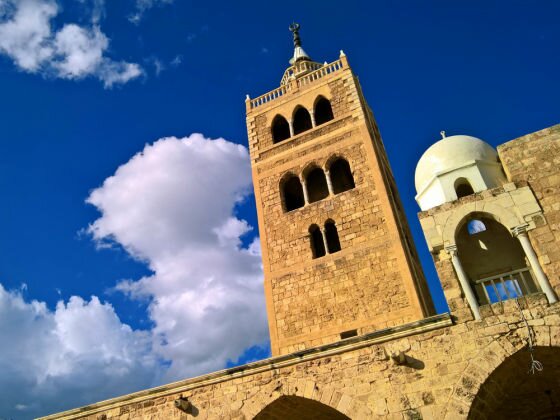
Mosques and Prayer Houses
Aattar Aazem wa AlSaadah Abdullah Ibn Mas'oud Abou Bakr AlSiddeeq Abou AlQasem Abou Samra AlQadeem Abrar Afghani Ahmadiyah Amin Amirah Arghoun Shah Asaadi ( alias, Shoum or Sharafeddin Mosque ) Asmar Bab AlRaml Baddawi Bani Aammar ( within the Tripoli Citadel ) Barbar Agha ( within the Tripoli Citadel ) Barsbay Bashir Bayan Bilal ben Rabah Borj Ras AlNahr Bourtasi Dhannawi ( alias, Salam ) Dar AlTarbiyah wa AlTaalim Dhahr AlMoghr Dubbaha ( alias, Baha'a ) Fat’h AlOthmani ( within the Tripoli Citadel ) Ghandour Ghazi Ghoraba Hamidi AlBalad Hamidi AlMina Hamzah Harah AlJadeedah Haram Harba Hizam Imam Ali Ibn Abou Taleb Iman Issa Ibn Maryam Islamic World League Kabir AlAali Karimiyyah Khadijah Bent Khouwayled Khaled ben AlWaleed ( Shalfah District ) Khaled ben alWaleed ( Abou Samra District ) Khanqah Khayrat ( alias, Islah Mosque ) Kholafah Mahmoud Beik AlSanjaq Mansouri Great Mosque Mawlawiyyah Muallaq ( alias, Za'im Mosque ) Mu'assassah AlIjtimaiyyah Mustafa Naji Nashabah Nasser Nour ( alias, Tartousi Mosque ) Omar Ben AlKhattab Ouwaysiyyah Othman ben Affan Qalaajiyyah Qasimiyah AlAhmadiyah Qawouqjiyah Qobbet AlNasr Rahmah Rahman Rahman Prayer House Rashad Rashidi Rashwani Rawdhah Redhwan Refaiyyah Salahuddin Salam Shaleh Shukr Sidi AbdulWahed AlMeknasi Tahham Tabbarah Tareq Taqwah Tawbah Tawjih Taynal Tell AlAali Towashiyyah Wadii Wafa Zaatiti Zahra’a Zafer Obsolete and Demolished Mosques Anbariyyah Batrakiyyah Dabbaghah Dayem Allah ( Ottoman, located in Haddadeen District. Commissioned probably by Sheikh AbdulMawla AlSamman ) Jawhariyyah Marj Prayer House Qarmashiyyah Wattar
Azem Izeddeen Aybak AlMawsili ( Mameluke ) Kastaflees Khodr Agha Mahkamah AlShariyyah ( The historical Palace of Justice ) Moghrabi Nawfal Sanjar AHomsi Sayfeddine Altintash ( Dabbaghah District ) Shanbour
Soap Making Factories
Souqs (shopping bazaars).
Aattareen Bazarkan Haddadeen Haraj Khoudar Koundarjiyah Qameh Nahhaseen Samak Sayyagheen
Takiyyah AlMawlawiyyah
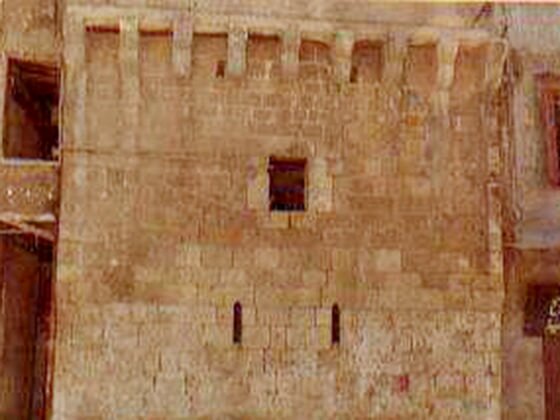
Adas Aytmish Baddaoui Barsbay Bohsas Julubban AlThahiri Magharebah Mansouri Great Mosque Qaytbay Tarabay
Zawiyyah AlQaderiyyah
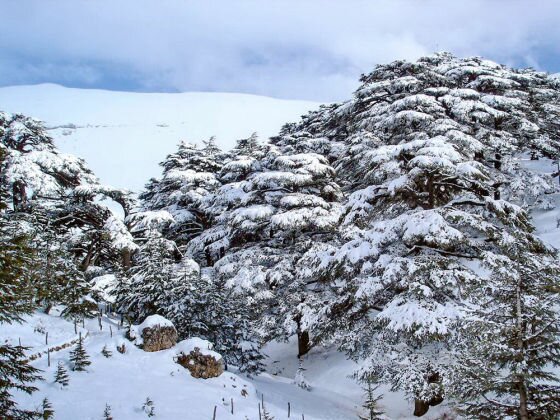
North Lebanon
Akkar Akkar AlAtiqah ( Ancient Akkar ) Arqa Bazbina Beereh Halba Mash'ha Menyeh Qal'at AlBurj Qammoua Qobbet B'shamra Sheikh Ayyash Batroun Batroun Douma Sourat Tannourine Bsharri Bsharri Cedars Forest Diman Hasroun Qadisha Cave Qannoubin Dhanniyyah Bakh'oun Ein Yaaqoub Jabal AlArbeen ( Forty Mountains ) Sfeerah Seer AlDhanniyah Koura Amioun Anfeh Balamand Haykaliyyah and Dhahr AlEin Kafr Qahel Kousba Zgharta Ehden I'aal Miziara Qozhaya Zgharta
- WEAR comfortable sturdy shoes for a walk around the old town and the souks.
- WOMEN should be prepared with head scarves if they wish to visit mosques.
- WHEN shopping in the old souks or downtown area, remember that gold is a good buy.
- A total of 45 buildings in Tripoli, many dating back to the 14th century CE, are registered as historical sites although at least 200 are present.
- IT is our wish that the registration of all historical monuments of Tripoli is to be achieved soon by the Lebanese Ministries of Tourism and Culture in order to save most of these monuments from erosion and intended destruction.
- EFFORTS are also put to make UNESCO announce Tripoli as a 'Protected Historical City'. Some major monuments, such as the Mansouri Great Mosque , Taynal Mosque, Sayyagheen (Jewellers') Bazaar, Tripoli Clock Tower, Madrassah AlSaqraqiyyah, and AlKhayyateen Caravansary have been restored recently.
© Copyright 2022 tripoli-lebanon.org - All Rights Reserved
- English (EN)
- Español (ES)
- Português (BR)
Is Tripoli Safe? Crime Rates & Safety Report
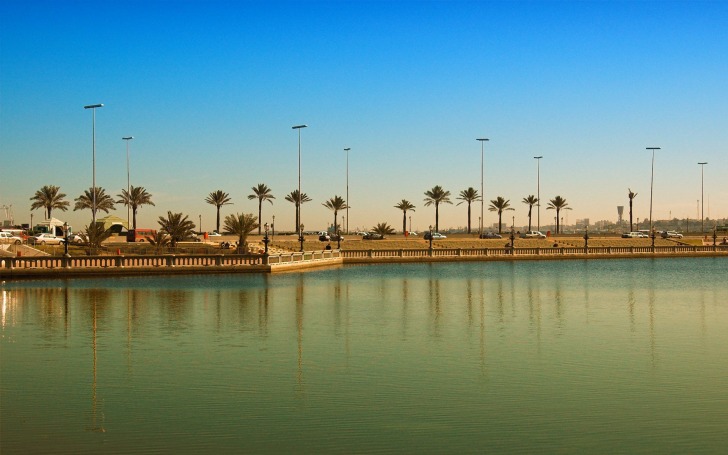
Libya : Safety by City
Tripoli has many important titles: it is the capital, largest city, principal harbor and biggest commercial and manufacturing center of the North African country of Libya.
The city is located in the north-west of Libya and on the Mediterranean Sea.
Unfortunately, even though it’s gorgeous, with historical places in the Old City of Tripoli that make for good tourist attractions from the Roman empire to Crusader-era attractions, the city isn’t recommendable to tourists because it’s mostly unsafe.
Even though Tripoli has been marginalized, the people somehow are getting over their conflicts with residents that tend to accept each other regardless of their diversities and live in harmony.
- Warnings & Dangers in Tripoli
OVERALL RISK: MEDIUM
Tripoli isn't safe and many governments are advising their citizens against traveling to Lybia's capital because of the current conflict following the bloody war to oust the Gadaffi dictatorship. Even though more stable now, visitors should be aware of all the risks posed by demonstrations and the remnants of armed militias.
TRANSPORT & TAXIS RISK: MEDIUM
The ongoing tumultuous situation makes it difficult to travel at night. Even though road conditions aren't too bad in Tripoli, driving standards are poor with factors that complicate traffic additionally, like the wind-blown sand that reduces visibility.
PICKPOCKETS RISK: HIGH
Pickpockets are active in Tripoli, and both petty and violent crime is rife. Avoid carrying too much cash and keep in mind that expensive watches, jewelry, and cameras will make you look like an easy target for pickpockets and opportunists.
NATURAL DISASTERS RISK: LOW
There aren't many natural disasters that affect Tripoli, apart from occasional earthquakes.
MUGGING RISK: MEDIUM
Violent confrontations like muggings and robberies are on the rise lately, so it is recommended that you take extra care on the streets of Tripoli, avoid dark streets and deserted areas. Bear in mind that risks increase after dark.
TERRORISM RISK: HIGH
Terrorists are very likely to try and carry out attacks in Tripoli. The biggest threat is coming from extremist groups including Daesh that are responsible for the majority of attacks.
SCAMS RISK: MEDIUM
There are many scams in Tripoli as well as scammers trying to take advantage of travelers. Be wary of people trying to distract you to steal from you and of taxi drivers overcharging you for a ride. We advise you to be extremely careful when handling money and around ATMs.
WOMEN TRAVELERS RISK: HIGH
Tripoli is not safe for solo female travelers. They are advised, that, if they must, they go out accompanied by someone. Be sure to avoid remote streets, both during day and night, and do not flash your belongings or handle money in public.
- So... How Safe Is Tripoli Really?
Tripoli, unfortunately, still isn’t a safe city to visit.
Libya isn’t like Dubai or Qatar and you’ll see at least five broken down cars on the first road you pass by but there are still beautiful places you can visit such as the Tripolitan beach or Roman sites filled with coliseums.
As for the bad neighborhoods in Tripoli, the most prominently mentioned one is Bab Alazizia – mainly Warshifana, it is criminal central in Tripoli.
Even people traveling to Tripoli from the south don’t like to pass through it so they don’t get robbed.
Any area surrounding Bab Alazizia, like Injila, is a risky place even though they have blocked off main roads connecting the two areas.
As for the good one, any neighborhoods near the city’s center are good, as long as they aren’t empty farmlands with a small number of people or housing.
Since Lebanon suffers from chronic power shortages, Tripoli can become very dark in the late hours of the night, and as we know, walking a dark street at night in the middle of the city isn’t the smart thing to do, so it’s far better to do your business in the morning.
- How Does Tripoli Compare?
- Useful Information
Most countries do need a visa to visit Libya. Make sure that your passport is valid for at least six months past the date of your staying in Libya. If you are not sure about your visa status, contact your local Lybian embassy for further information.
Libyan dinar is the official currency in Tripoli. There are a limited number of ATMs in Tripoli and travelers are advised to bring cash with them.
Tripoli's climate is affected by both the Mediterranean Sea and the desert. The climate is characterized by cool winters with some rain and sub-freezing temperatures in the desert at night. As for summers, Sahara is extremely hot and dry during this season.
Tripoli International Airport is the main international airport serving the capital city of Libya. It is located in the area of Qasr bin Ghashir about 34 km from central Tripoli.
Travel Insurance
Just like anywhere else, we recommend getting travel insurance when traveling to Tripoli, since it covers not only the costs of medical problems but also theft and loss of valuables.
Tripoli Weather Averages (Temperatures)
- Average High/Low Temperature
Libya - Safety by City
- Where to Next?
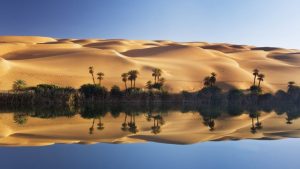
6 Reviews on Tripoli
I went to Libya a while ago an it’s was got I got robbed 24 times don’t go here
What is your primary language? I don’t understand your post.
Not recommended
I would not recommend a trip to Tripoli for any reason at all. If you must, then take all the extra measures to stay safe while you are there. The government and foreign affairs department of your country has a strong reason why they discourage travel to Libya. Other than that, if you do find yourself there enjoy the coastal view and the architecture.
I was surrounded by men when I was travelling alone on the way to meet some friends. The men tried to take my money but luckily there were some other people who had heard me crying for help.
i almost got killed
yes i really almost died…
You referred to Lebanon instead of Libya when you mentioned electrical outages. What do they have to do with each other?
Share Your Experience Cancel reply
Your Review
Title of your review
Article Contents
- Tripoli : Safety by City
- Overall Risk
- Transport & Taxis Risk
- Pickpockets Risk
- Natural Disasters Risk
- Mugging Risk
- Terrorism Risk
- Women Travelers Risk
- Weather Averages (Temperatures)
- User Reviews
- Share Your Experience
Popular Destinations

Safety Index
Recent reviews & comments.
- dummy above me on Saudi Arabia
- amora on 15 Pros and Cons of Living in Jamaica
- M.... on Amman
- Anton on Jordan
- Silv on Odesa
Popular US States
- Pennsylvania

IMAGES
VIDEO
COMMENTS
9. Visit the Taynal Mosque. The Taynal Mosque is a renowned historical mosque in Tripoli, Lebanon, and an architectural masterpiece representing the Mamluk era. Built in 1336 by Amir 'Alam al-Din Taynal, the mosque is located on the site of a former church and later a Crusader fortress.
Read on for the best things to do in Tripoli, Lebanon. 1. Walk through Tripoli Citadel's ancient halls. Once known as The Citadel of Raymond de Saint-Gilles, Tripoli Citadel stands as a great historical landmark commemorating its medieval roots as well as showcasing Tripoli's rich history. Enjoy the amazing views of the city from the citadel ...
7. The Clock Tower. 31. Points of Interest & Landmarks. By mohammade456. An old ottoman clock tower built in 1902 , great mark in tripoli, you should talk to the municipality if you wanna go... See way to experience (1) 8. Souk Al-Harajb.
Visit the old souks. Jump all the way back to Medieval times with a visit to Tripoli's old souks. There is a total of nine old souks for you to explore, with the most notable being the Attareen (Fragrance Makers), Nahasseen (Copper Welders), Soap Khan, and Khayateen (Seamstresses). These were divided according to ancient guilds as Tripoli was ...
Lebanon, Middle East. Captivating Tripoli (Trablous in Arabic), Lebanon's second-largest city, is famous for its medieval Mamluk architecture, including a bustling and labyrinthine souq that is the best in the country and full of atmosphere. The city is also blessed with handsome examples of Crusader- and Ottoman-era architecture.
10 Things to do in Tripoli. 1. Stay overnight. This family-run-establishment is one of the best budget hotels in the area. The rooms are comfortable and the lounge serves as a dining area. Breakfast is included in the price and the owner, Pierre Jabour, can organize day trips upon request.
January 6, 2021. Tripoli is Lebanon's second largest city and provides visitors with a great Middle Eastern vibe. Wander around the winding market places and historical sites and you'll soon find yourself falling for its charm. Getting There. Tripoli is located around 80km north of Beirut. Take the coastal highway northbound from the ...
Souq An Nahhassin. Tripoli. Gleaming brassware characterises this market street, just outside the cramped central area of the souq. You'll need plenty of tenacity and elbow grease to…. Discover the best attractions in Tripoli including Al Mina, Khan Al Khayyatin, and Citadel of Raymond de Saint-Gilles.
10 Reasons Why You Should Visit Tripoli In Lebanon. In the north of Lebanon, an amicable aura rises from a humble scaled city that was once the great Phoenician capital that reigned over the seas. Tripoli, a historic northern city has it all. Sandy beaches, friendly people, ancient sites, and delicious cuisine.
The 1 Port of Tripoli is mainly for freight and not very friendly for passengers, but has Lebanon's only scheduled passenger ferry, run by Med Star. 34.4442 35.8305. 2 Med Star, Aazmi Street, first floor, [email protected]. The ferry makes the journey between Tripoli and Tasucu, ca. 100 km west of Mersin in Turkey around three times a week.
A mix of the charming, modern, and tried and true. See all. Hotel Via Mina. 63. Lamunia Hotel & Wellness Spa. 37. from $80/night. Le Chateau des Oliviers. 20.
Sit by the sea in Mina or wander around its streets. The coastal vibe of the district is a definite change from the rest of the city. Grab a cup of coffee from the kiosks and sit on a chair by the sea or stop by at one of the pubs in the inner streets. Mina is a definitely a district for the modern flaneur to explore. Mina, Tripoli, Lebanon.
Tripoli, Lebanon is a city rich with history, culture, and amazing facts. Located on the Mediterranean coast of Lebanon, Tripoli is the country's second-largest city and the largest in the north. ... Tripoli is a great place to visit and explore. Whether you're looking to experience the history and culture of the city or just relax on the ...
Whether you live in Lebanon or not, whether you have booked your summer ticket to Lebanon or planning to, we highly recommend you to have Tripoli on your must-visit list. Tripoli is the Northern Capital of Lebanon, and the 2 nd largest city in the country. It has been underrated for so long due to previous unstable economic, political, and ...
Tripoli is Lebanon's second-largest city and despite being one of its poorest, it is rich in diversity and is a beautiful city to explore. ... 1- Visit Tripoli Mina: Picture by Abir Kassem Enjoy the beach and the kiosks lined up along the coast offering warm drinks and occasionally some delicious Tripolitan Ka'ak. Some of them even have ...
Best Time To Visit Tripoli. The best time to visit Tripoli is during the spring (April to June) and fall (September to November) seasons. During these months, the weather is mild and pleasant, with comfortable temperatures ranging from 15°C to 25°C (59°F to 77°F). The summer months (June to August) can be hot and humid, with temperatures reaching 30°C to 35°C (86°F to 95°F).
The walled Nahr Abu Ali at Tripoli. Tripoli (Arabic: طرابلس, ALA-LC: Ṭarābulus) is the largest and most important city in northern Lebanon and the second-largest city in the country. Situated 81 km (50 mi) north of the capital Beirut, it is the capital of the North Governorate and the Tripoli District.Tripoli overlooks the eastern Mediterranean Sea, and it is the northernmost seaport ...
Tripoli is called Tarabulus in Arabic, a common name for several cities in different countries. With a population of roughly 300 000, Tripoli is the second-largest city in Lebanon and the economic center of the north. Unlike Beirut, in Tripoli, there is not much tourism. It seemed to us somewhat neglected, with not much a construction boom.
Being a residential town, Tripoli is still full of small places for local food. Restaurants like Akra and Dannoun are a staple of the Tripolitan cuisine and are a must visit for anyone in Lebanon. The Ottoman influence, again, helped make the food in the North distinct from other places in Lebanon.
He designed the 10,000-hectare site, intended as an international fairground, after a single visit to Tripoli in 1962. Construction, however, was halted at the outset of Lebanon's civil war in ...
WOMEN should be prepared with head scarves if they wish to visit mosques. WHEN shopping in the old souks or downtown area, remember that gold is a good buy. A total of 45 buildings in Tripoli, many dating back to the 14th century CE, are registered as historical sites although at least 200 are present.
Tripoli is Lebanon's second ;largest city and sits far to the north, near the border with Syria. Though it looks far on a map, its distance is only 50 miles,...
OVERALL RISK: MEDIUM. Tripoli isn't safe and many governments are advising their citizens against traveling to Lybia's capital because of the current conflict following the bloody war to oust the Gadaffi dictatorship. Even though more stable now, visitors should be aware of all the risks posed by demonstrations and the remnants of armed militias.
Federal Register/Vol. 89, No. 79/Tuesday, April 23, 2024/Notices 30439 ddrumheller on DSK120RN23PROD with NOTICES1 VerDate Sep<11>2014 17:48 Apr 22, 2024 Jkt 262001 PO 00000 Frm 00120 Fmt 4703 Sfmt 4725 E:\FR\FM\23APN1.SGM 23APN1 EN23AP24.038</GPH> Individuals: 1. ABU SHANAB, William (Arabic:~ ~i f'LAu) (a.k.a. ABU SHANAB, William Mahmud), Sidon, Lebanon; DOB 1985; nationality Lebanon; Gender ...